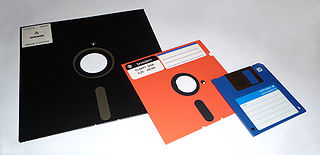The Beginner's Introduction to Computer Networking
As of 2020, networks are used everywhere and lie at the core of the world economy. Having said that, how many people actually understand the details of networking?
The answer is a privileged few.

The purpose of this article is to give you a solid understanding of the goals and functions of a network for you to continue your networking journey.
Let's get Started.
Now if we're going to talk about networking we should really define what a network is.
So what is a network?
Unfortunately I'm refering to a social media network that we all know and love.
In this case we're discussing a computer network.
Here is a formal definition courtesy Amazon Alexa:
"A computer network is a digital telecommunications network for sharing resources between nodes which are computing devices that use a common telecommunications technology."
"Data transmission between nodes is supported over data links consisting of physical cable media such as twisted pair of fiber optic cables or by wireless methods such as Wi-Fi microwave transmission or free-space optical communication."
OK, so that's the end of this article thank you for following along, I hope you all understand what computer networking is.
Yeah... If only.
Let's break it down
Let's start firstly with the why? Why do we have computer networks?
What's the whole point of the Internet?
What's the whole point of all this infrastructure that's been built around the world?
The big reason to have a network as per this definition is to share resources.
We want to share information or share some kind of resource with someone else.
Now what is a resource?
In the old days. A common example of a resource would be a printer.
If you had an office with 100 people in the office you could buy a printer for every workstation or for every PC and that's what they had to do before the days of networking.
They either had to have a printer for every computer or have no printers. Another alternative would be to have a floppy disk and then go over to the printing station and then print it manually.
It's not cost-effective to buy a printer for every workstation or for every person.
It makes much more sense to have a centralized resource in this case a printing resource and share that resource amongst the people in the office.
So rather than having let's say 100 printers for 100 people, you only let's say have 10 printers.
So you've reduced the cost by creating a shared resource
A resource can be shared by what are called clients.
So we have client devices or PCs in this example that are sharing a resource in this case a printer.
Another Example: file sharing.
This is extremely common.
I want to share a file with you.
So how do I do that?
Back in the old days, the way to do that was to get a floppy disk like this.

The problem with these floppy disks is in the old days, they're only supported 1.4 megabytes.
So if you wanted to share file with your friend you had have to copy it to this floppy disk then walk using what we would call "sneakernet" and put it into the other computer and then access the file.
So that's how people would shared resources.
In this case a file or a photograph.
Now today, we still use this kind of technology by using USB thumb drives.
But that's not very effective.
It's not scalable and doesn't work that well.
Let's be honest, most humans would be too lazy to have to walk around the office to share files.
It's much easier just to share files using a digital transmission mechanism or medium.
Why are we doing this?
We are trying to share a resource between what in this definition is called a node and they define that as a computing device.
So a node is a computing device.
And there are many types of computing devices.
We could have:
- Windows laptops.
- Mac books.
- Phones.
- Servers.
- Printers
Those are often the devices that most consumers will think about.
But in networking, we have specialized devices such as hubs, switches, routers and firewalls to name a few.
You are reading this article through a computer network.
The computers communicate to each other via a data link being a physical cable such as twisted pair, fiber optic cables, Wi-Fi or some type of data link where I'm sharing information with you.
So the big idea here is I'm sharing a resource with you and I need a way to get that to you.
You need a device that can receive the resource, we need some kind of transmission media which could be physical cables or it could be wireless.
So the goal is rather than having to physically transport a file on a USB drive or in the very very old days using a floppy disk we use a cable or some kind of mechanism to transmit data from one device to another or from one device to many devices.